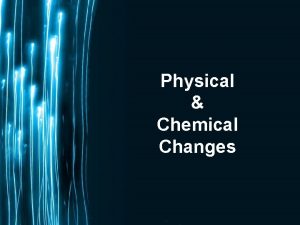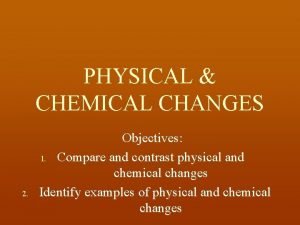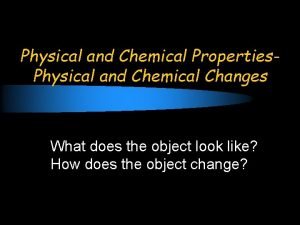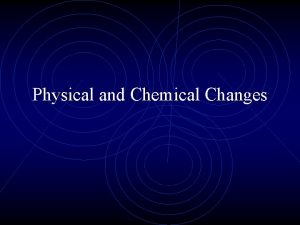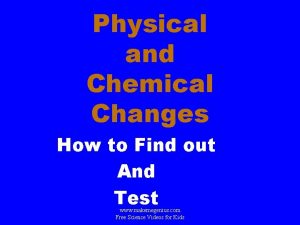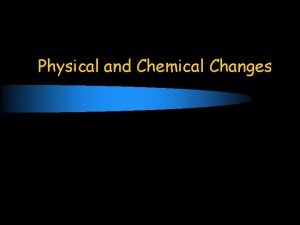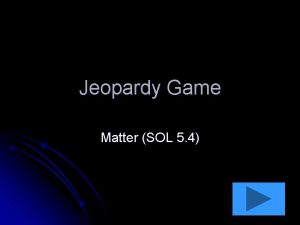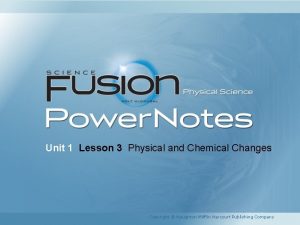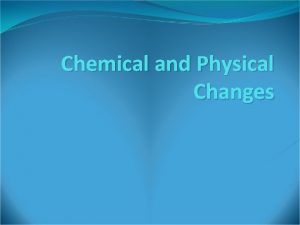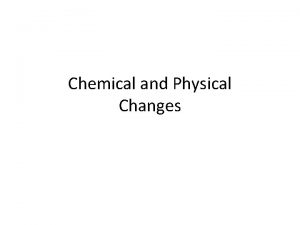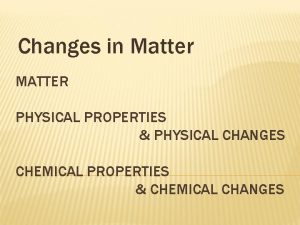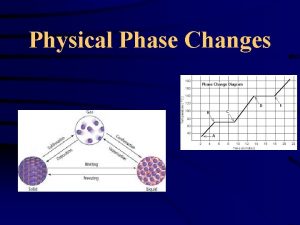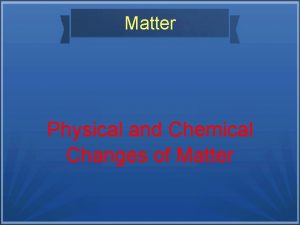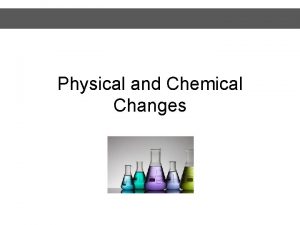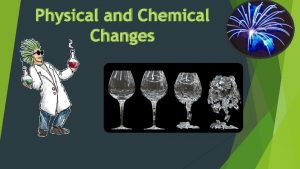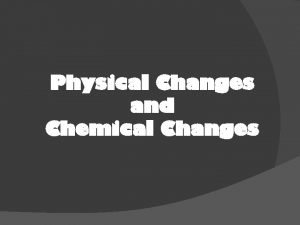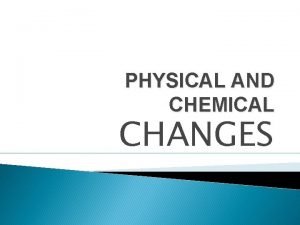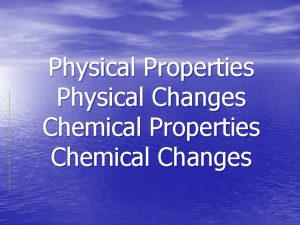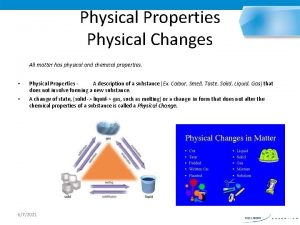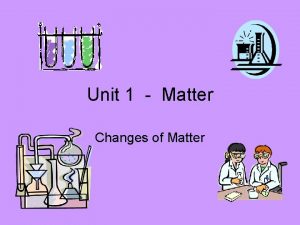Chemical Changes in Matter Physical Vs Chemical Changes
















- Slides: 16

Chemical Changes in Matter

Physical Vs. Chemical Changes • Physical Change: is a change in the characteristics of a substance. • Chemical Change: is a change from one substance into another substance.

• One of the most important chemical changes on Earth is photosynthesis. * green plants use sunlight, carbon dioxide and water to make sugar and oxygen.

• Another important chemical change takes place in the cells in your body during respiration. * the cells combine sugar and oxygen to produce energy, carbon dioxide and water

Chemical Reaction • A WELL defined example of a chemical change. * one or more substances are changed to new substances

Reactants • The substances that are about to change. * the stuff going into the reaction * found on the left side

Products • The new substances created by the reaction. * the stuff you get after the reaction * found on the right side

Reactants Products • Shows the relationship between both sides. • The arrow is read as produces or yields.

Law of Conservation of Mass • In a chemical reaction, matter is NOT created or destroyed only converted (changed). * you get what you pay for

• When describing a chemical reaction, the Law of Conservation of Mass MUST be satisfied.

• Chemical reactions need lots of words to state all the important information. * science developed a shorthand method to describe a chemical reaction

Chemical Equation • An expression that describes a chemical reaction using chemical formulas and other symbols. * Na(s) + Cℓ(g) Na. Cℓ(cr)

• What does the symbols (cr), (g), (aq), (ℓ) and (s) mean in the equations? * (cr) = crystalline solid * (g) = gas * (aq) = aqueous [dissolved in water] * (ℓ) = liquid * (s) = solid

Coefficients • Represents the number of units of each substance taking part in a reaction. * how much of each stuff is going into and coming out of a reaction * 2 H 2(g) + O 2(g) 2 H 2 O(ℓ)

Coefficients • If no number is given we assume the number one (1). * 2 H 2(g) + 1 O 2(g) 2 H 2 O(ℓ)

 What is a physical change
What is a physical change True or false: chemical and physical changes alter matter.
True or false: chemical and physical changes alter matter. Examples of physical changes
Examples of physical changes Physical change
Physical change Compare and contrast physical and chemical changes
Compare and contrast physical and chemical changes Physical and chemical changes
Physical and chemical changes Sawing wood chemical or physical change
Sawing wood chemical or physical change Generation genius physical and chemical changes
Generation genius physical and chemical changes Physical l change
Physical l change Chemical change and physical change
Chemical change and physical change Whats the difference between physical and chemical changes
Whats the difference between physical and chemical changes Which is true about chemical change
Which is true about chemical change Whats physical change
Whats physical change Physical and chemical changes jeopardy
Physical and chemical changes jeopardy Study jams physical and chemical changes
Study jams physical and chemical changes Physical and chemical changes examples
Physical and chemical changes examples Lesson 3 physical and chemical changes answers
Lesson 3 physical and chemical changes answers



